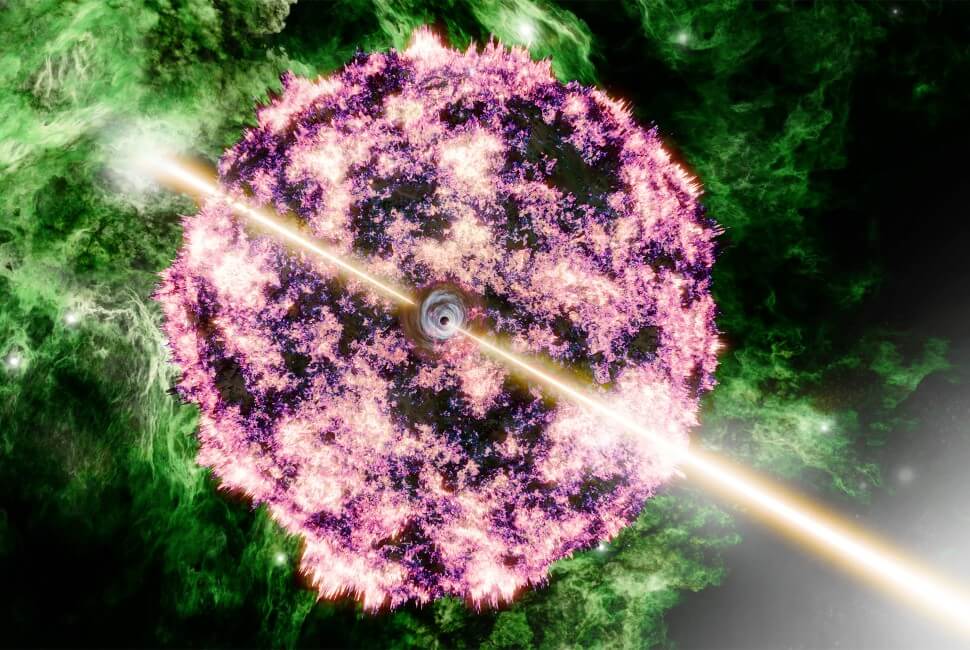Research shows the theory of “star-to-star energy transfer” using gravitational lensing
Slava J. Turchev, a researcher in the Space Structure Research Group at NASA’s Jet Propulsion Laboratory, published a paper online titled “Gravity Lensing for Interstellar Energy Transfer,” which transfers energy up to a distance of several light-years. It was published in According to Mr. Turishev, although a comprehensive analysis of the theory presented in the paper has not yet been conducted, it is considered a feasible theory given the current scientific level.
(PDF file) Gravitational lensing for interstellar energy transfer
https://arxiv.org/pdf/2310.17578.pdf
Civilizations can use gravitational lensing to transfer energy from star to star – the universe today
Civilizations Could Use Gravitational Lenses to Transmit Power From Star to Star
Light from stars and galaxies bends according to Albert Einstein’s theory of general relativity as it passes through space-time, which is distorted by the gravitational field of the celestial bodies it travels through. At this time, the light is bent in the same way as it does when it passes through an optical lens, so the image it receives may appear bowed and distorted, or a smaller image may be magnified farther away, having the same lens effect. This is called the “gravitational lensing effect,” and in the past it was possible to observe a “stray black hole,” which is difficult to observe because there are no celestial bodies around it, at a distance of 5,150 light-years. A black hole in a galaxy 2.7 billion light-years away, the results of which research revealed.
A supermassive black hole with a mass of more than 30 billion suns has been discovered at the center of a galaxy 2.7 billion light-years away.
Some researchers are working on using the Sun as a solar gravitational lens (SGL) to apply to astronomy and the search for extraterrestrial life. In the past, gravitational lenses have been used to amplify radio signals. It was also published. In a paper published in November 2023, Turyshev proposes the theory of using stellar gravitational lensing to transfer energy from star to star. The paper has been published online and is being reviewed for publication in Physical Review, a scientific journal of the American Physical Society.
The paper explores how a star’s gravitational concentration is used to concentrate energy and beam the energy to other star systems. By building the same equipment used for interplanetary communications but with the size of the transmitted beam, Turyshev said a pair of stellar gravitational lenses could transmit not only images of light but also energy at interstellar distances. .
The research uses analytical tools from previous research on SGLs to look at how they amplify transmitted light and energy. Speaking to Universe Today magazine, which covers space and astronomy topics, Turyshev said: “For a long time I avoided the topic of SGL transmission capabilities because analytical tools for studying energy transfer were not developed. “There is ongoing research on many related and important topics that led to this study,” he said in an email.
The study began by reconsidering how light is amplified and transmitted in gravitational lensing systems, using analytical tools from previous work on SGLs. Next, we constructed a scenario in which the same method was applied to a laser output device placed in free space, and applied gravitational lensing theory. In conclusion, a laser output device located in the focal region of a gravitational lens would be able to amplify the energy received by the receiver by several light years, and if powered by a beam using SGL, it would be possible to communicate with it and conclude that it is possible to save electricity.
If gravitational lensing could be used to provide communications and power several light-years away, long-term interstellar exploration would be possible, as well as securing enough power for terraforming. “Although we have only demonstrated feasibility, this is the first paper to address all topics in a non-speculative way, focusing solely on the physics involved. There are many other topics to consider, such as misalignment due to lens position and lens pair , the receiver, and the existence of moments that characterize the internal structure of the lens “it is a possible theory.”

“Travel maven. Beer expert. Subtly charming alcohol fan. Internet junkie. Avid bacon scholar.”









More Stories
The brightest gamma-ray burst in history turned out to be an ordinary supernova
Will it be the final display Qidi Vida |
An IRC client running on your motherboard's UEFI is born – Livedoor News